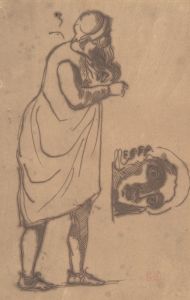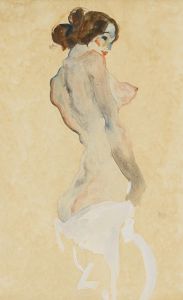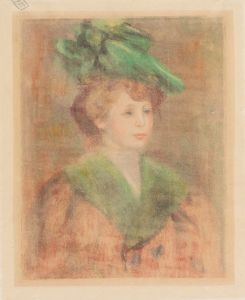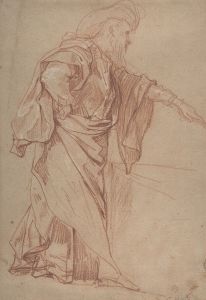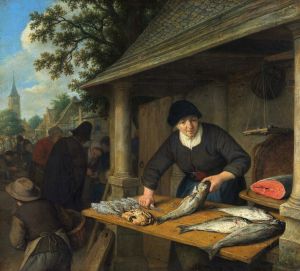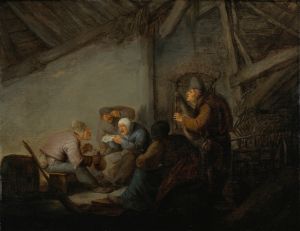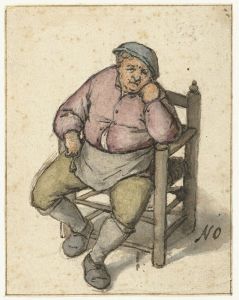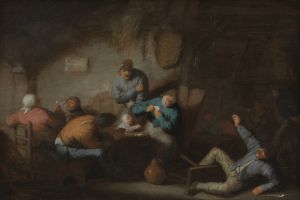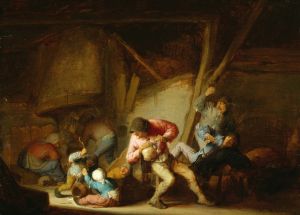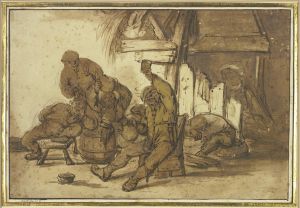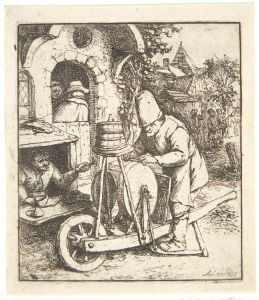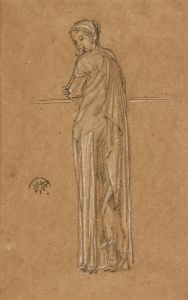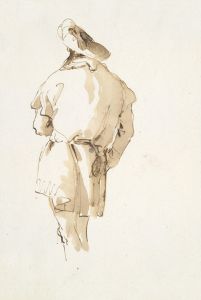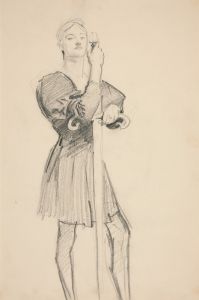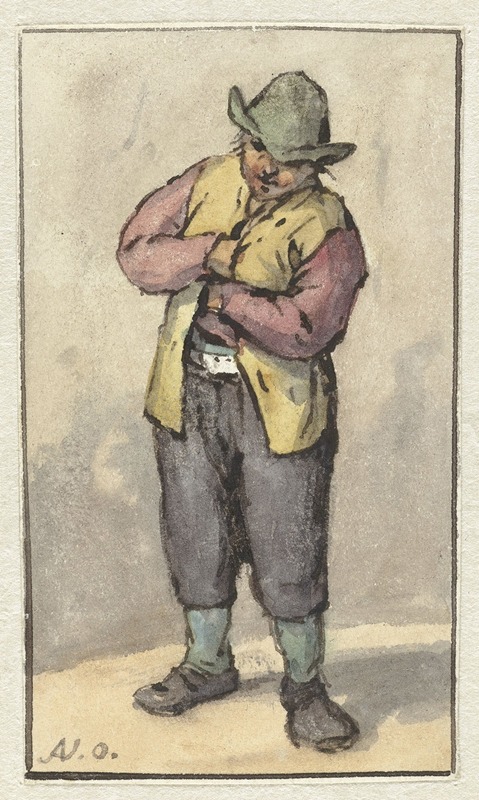
Staande boer met groene hoed
A hand-painted replica of Adriaen van Ostade’s masterpiece Staande boer met groene hoed, meticulously crafted by professional artists to capture the true essence of the original. Each piece is created with museum-quality canvas and rare mineral pigments, carefully painted by experienced artists with delicate brushstrokes and rich, layered colors to perfectly recreate the texture of the original artwork. Unlike machine-printed reproductions, this hand-painted version brings the painting to life, infused with the artist’s emotions and skill in every stroke. Whether for personal collection or home decoration, it instantly elevates the artistic atmosphere of any space.
Adriaen van Ostade was a Dutch Golden Age painter known for his genre scenes depicting peasant life. One of his works, "Staande boer met groene hoed" (Standing Peasant with Green Hat), exemplifies his focus on the everyday life of the lower classes in 17th-century Holland. Although specific details about this particular painting are limited, it is consistent with Ostade's broader body of work, which often features rustic interiors, taverns, and rural settings.
Van Ostade was born in 1610 in Haarlem, where he spent most of his life. He was a contemporary of other notable Dutch artists such as Frans Hals and Rembrandt van Rijn. Ostade was initially influenced by the painter Frans Hals, under whom he is believed to have studied. His early works are characterized by a darker palette and a focus on the more boisterous and rowdy aspects of peasant life, often with a humorous or satirical edge.
As his career progressed, Ostade's style evolved. He began to use a lighter palette and his compositions became more refined, reflecting a greater sensitivity to the nuances of light and shadow. This evolution is evident in his later works, which often depict quieter, more intimate scenes. "Staande boer met groene hoed" likely falls into this later period, showcasing Ostade's mature style with its attention to detail and subtle use of color.
Ostade's paintings are notable for their detailed portrayal of the textures and materials of everyday life. In "Staande boer met groene hoed," the peasant's clothing, including the distinctive green hat, would have been rendered with careful attention to the fabric and its interaction with light. This focus on materiality is a hallmark of Ostade's work, contributing to the sense of realism and immediacy in his paintings.
The subject matter of Ostade's paintings, including "Staande boer met groene hoed," reflects the social and economic conditions of the Dutch Republic during the 17th century. The period was marked by significant urbanization and economic growth, yet there remained a strong connection to rural life and traditional customs. Ostade's work captures this duality, providing a window into the lives of ordinary people during a time of great change.
Ostade's influence extended beyond his own lifetime. His depictions of peasant life were highly popular and widely collected, influencing later artists who sought to capture the spirit of everyday life. His works are now held in major collections around the world, including the Rijksmuseum in Amsterdam and the Louvre in Paris.
While specific information about "Staande boer met groene hoed" is limited, it is representative of Adriaen van Ostade's broader oeuvre. His paintings continue to be appreciated for their technical skill, their insight into 17th-century Dutch society, and their enduring charm.





